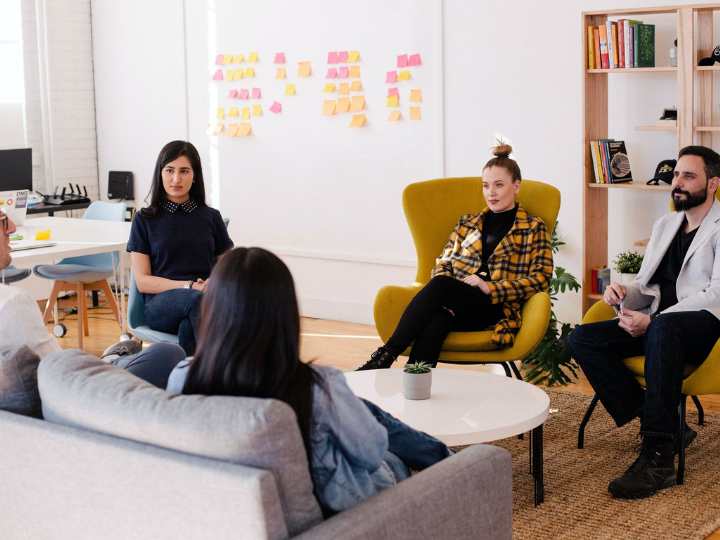by Susan Israel*
Typically, developing and implementing sustainability plans is a top-down process, but meeting ambitious goals requires engaging the entire team because solutions will need to come from all directions. Commitment and applied focus come when an organization goes beyond talking about goals to creating a culture that supports change.
However, even when company leadership is fully dedicated, the number of people involved in drafting and implementing a plan is often quite small, and employees are “engaged” by collecting and sharing endless data.
Is that working? Probably not, because engagement does not begin with data: we need to connect to “wicked” problems at a gut level. In 2008, after 20 years of practicing architecture, including green building practices, I realized that the problem did not result from a lack of solutions: It resulted from a lack of awareness and commitment. We need a massive culture shift that prioritizes climate change.
I founded Climate Creatives to develop innovative methods to engage people on sustainability issues, using design experiences and public art to make data salient.
Companies who try to engage their employees with quantitative information will fail because most people don’t get terribly motivated by data, especially when it is abstract and unrelatable. What is a gigawatt of energy? Gigaton of carbon? Billion cubic meters of water?
Some companies go beyond data to include storytelling, with pictures of people fleeing floods, and or dying polar bears. So, on top of being baffled, we are overwhelmed, sad, frightened and a bit fed up with news stories about drought, heat, flood and fire.
Overwhelm leads people to tune out, deny science or become frozen by the sheer scale of the problem.
Another response is shifting responsibility. Ever hear these: “We need policy first to give us direction and level the playing field,” or “Personal actions are insignificant.” True, policy is necessary, but individuals impact policy and outcomes. Everyone is a voter, influencer or decision-maker and small actions aggregate to make a big difference. How do we move from apathy, fear, despondency, and obliviousness to engagement?
An organization’s culture needs to be embedded with the belief that, individually and collectively, we can improve our climate outcomes. When everyone feels they have the support to drive change regardless of their title, solutions will emerge. To create a sustainability culture, we need four anti-metrics: Hope, Agency, Creativity and Community.
1. Hope. Hope is essential because when we have no hope, we have no action. Hope is what inspires us and frees us to act. Fear blocks us, or worse, sends us running in the other direction.
2. Agency. We need to believe in our own capacity to make a difference. Nothing builds agency more than innovating solutions. Even small wins, or ideas that go nowhere, provide an emotional foundation for engagement because we can see our own power to be change-makers.
3. Creativity. The experience of creating brings joy, hope and inspiration. Working with our hands or in images pushes people out of their comfort zone in a way that flattens the hierarchy. Ideas, not status, become the primary currency. There are no right answers and no predetermined outcomes. We lose our ability to fall back on the same old language, so we work more collaboratively across silos and domains. The fear of saying something wrong is removed in a bubble of activity that creates a safe zone for exploration.
4. Community. We change a group’s beliefs by working together to create a collective vision of a better path forward. Working in small teams improves communications, trust, and comfort. Groups also harness a diversity of ideas. When we complete a task that can’t be completed by any individual alone, we go further, and succeed on an individual level as well as an organizational level.
How do you capture this powerful experience in a reasonable time, in a work environment, and with a directed purpose? Climate Creatives developed a methodology using micro studio experiences to encapsulate all these ideas into powerful and compact exercises. Using lightweight art materials, client-driven agendas or specific topics are explored in exercises such as:
-“What’s on My Plate?”: craft a meal with no animal protein, create a banquet together“
-Heat Islands”: redesign an urban space with native trees and plants“
-Take a Stance”: speak your truth or act out a skit wearing headpieces of your own creation“
-Message-in-a-Bottle”: communicate asynchronously across cohorts, within teams, or at events
For a deeper dive, support your organization’s goals in longer bespoke workshops. Developing your ideas, even if they are intangible, in physical form with a small team, is a form of meaningful play. Offering and receiving input and celebrating the results with the larger group build camaraderie and excitement.
This joyful experience generates viable ideas and deep engagement, and participants feel successful. Harness your entire team to reach your sustainability goals and rebuild connections after working remotely for so long. Hope, Agency, Creativity and Community combined develop a deeper sustainability culture — with no more dead polar bears.
*Founder & President, Climate Creatives
**first published in: www.weforum.org




 By: N. Peter Kramer
By: N. Peter Kramer

